How To Enjoy Merida's Carnival
Editor's Update - January 2014
Carnival this year has been mostly moved to a new location, the state fairgrounds in the town of Xmatkuil, south of the city. Xmatkuil has ample parking and space to handle the large crowds of people that overwhelm the city during the week of Carnival. However, this move is not without controversy. The business owners along Paseo de Montejo are mostly happy to see the event move, as they no longer have to put up with a week of lost business, chainlink fences blocking their entrances and other inconveniences that they dealt with every year. On the other hand, many residents and visitors are mourning the loss of the event that imparted a party atmosphere to the entire city.
This year, the beginning (The Burning of the Bad Humors) and the end (The Burning of Juan Carnival) will both be held in the traditional place, in front of the Ayuntamiento in the Plaza Grande. Also, the Pre-School Parade will also be held in the historic centro of Merida. All the other events (whose dates and times can be seen on our Month At a Glance Calendar linked from the top right of every page of the website) will be held in Xmatkuil. It will be interesting to see how the event changes with this change of venue!
Before It Starts
The week or so before Carnival starts, you might notice that the city gets a little more crowded and busy. Big buses are parking where big buses usually don't park. Street cleaners are everywhere. Chain link fences spring up along Paseo de Montejo to block off the lawns and gardens in front of the hotels, restaurants and mansions along the way.
If you like to stroll along Paseo de Montejo, you might find things to watch during the week of preparation. Men erecting Coca Cola and Sol stands every fifty feet. Men painting numbers on the sidewalks, putting up signs, etc. If you like to walk your dog there, you might consider another location for the weeks before, during and after Carnival. Those chainlink fences make most dog-attractive areas out of reach, and you will find yourself avoiding a lot of new structures and people just to get down the street.
If you want to watch a parade from a seated position, you should consider buying tickets in the palcos (the stands) along Paseo de Montejo or Calle 60 (see link at the end of this article). Depending on which restaurants came in or out of business during the last year, you might also consider reservations at a restaurant. But be prepared that only certain seats will allow you to watch the parade. There will be people standing all along the parade route, and there will be bleachers set up in the middle of Paseo de Montejo. So if you wanted to see the parade from, say, Hennessy's Irish Pub, you will definitely enjoy a nice cold Guinness, but you may not be able to actually see the parade. A restaurant or bar with an upstairs patio, like Rosas y Xocolate will be a better choice for viewing the festivities.
Decide What You Want to See
There are seven days of Carnival and only those with the most stamina can see it all. Carnival really begins weeks before with the crowning of the King and Queen of Carnival. But assuming that you won't be attending those pre-ceremonies, you should decide what you want to see during the actual week of Carnival. Wednesday night is the beginning... the ritual is called Burning of the Bad Humors (Quemando de Mal Humor). Fireworks are set off and dancing ensues in the Plaza Grande for a few hours, getting everyone in the mood for the next few days. The place to be on Wednesday night, therefore, will be the Plaza Grande, and there won't be much going on along Paseo de Montejo.
The Children's Parade happens on Thursday afternoon, and is one of the most charming events of the week. It starts about 4 pm at the Plaza Grande. It only lasts about an hour or two, so don't be late. Prepare to be charmed and delighted. And don't plan on partying that night, because the partying doesn't begin until Friday.
The Weekend
Friday night is the first parade. Saturday night is the second one. They are raucous affairs... the unveiling and enjoyment of the new float designs and the new Sol and Corona girls, professional models who are flown in just for this purpose and who are the biggest draw of the event. Our local sources tell us that half the people are there just to see the girls. Yes, there are beautiful women and scantily clad men... but nothing raunchy, usually. Carnival in Merida, even on a Friday or Saturday night, is a family affair... well, at least the government-sponsored parade part is tame. After the parade, things get a little more wild.
The entire length of Paseo de Montejo, on both sides, is lined with snack bars and vendors. Mostly they are selling tortas (sandwiches), tacos, beer, soft drinks and toys for partying... in the last few years, lots of things with flashing lights, mostly from China. There are big bandstands set up at Parque Santa Lucia, at the Remate, at the glorieta by Oxxo and the intersection in the Hotel Zone (by Walmart). There are a few smaller ones along the way. During the parade, the bandstands, which are "owned" by local TV and radio stations, have announcers who provide constant repartee and commentary about the parade. When the parade is over, those bandstands are turned over to local musical acts, everything from vomit rock to salsa bands. The streets are packed, the attendees are increasingly drunk and garbage piles up everywhere.
If you live downtown, be prepared for constant noise from the Paseo de Montejo area until about 2 or 3 on Saturday and Sunday mornings. The partying continues until dawn, which is usually quiet while everyone is sleeping it off. Paseo de Montejo is still not a good place to walk dogs, though, unless you don't mind them eating old hot dogs and tacos off the pavement. You get the idea.
The third parade of the weekend is on Sunday, starting at noon (all the parades start at the Monumento de la Patria, across from MacDonalds). The Sunday parade is more of a family affair, and a great time to be a photographer. It's usually HOT, so if you plan to attend, prepare yourself with a cold drink and a hat, at the very least. Once you are on the parade route, you probably can't leave (too many people behind you...) so be prepared for that too.
By 5 PM on Sunday, things are winding down a bit. The vendors stop selling liquor by 6 PM on Sunday, so those of us who live downtown usually get some sleep on Sunday night.
The Traditional Parade
Monday night is the night of the traditional parade. This parade is not as well attended (we're pretty sure the Corona and Sol girls get this night off), so it's a better parade to see if you don't like crowds. There are a lot of dancing groups dressed in traditional huipiles and white outfits. The last time we attended this parade, a few years ago, some of them were even dancing to traditional Yucatecan songs. But just as many were walking to the beat of the normal loud Carnival dancing music... an incongruous sight if there ever was one.
The Last Parade and the Final Event
The last parade is on Tuesday at noon, and is called Desfile de la Batalla de las Flores (the Parade of the Battle of the Flowers). It used to be that they would throw flowers at each other in a mock battle. Now they just throw fresh flowers instead of beads. Tuesday is generally a work holiday and the parade is very well attended. It is everyone's last chance to really party, but generally the festivities are all but over by 5 PM that day. By then, the long weekend is catching up to everyone.
On Wednesday evening, about 7 PM, Juan Carnival, a personification of the spirit of Carnival, is burned in the zocalo to end the whole affair. By then, the people who participated in Carnival are tired and hungover and this event is the least well attended. It's a farewell to the endless partying and a welcome to the austerity of Lent.
Carnival Characters
Throughout the parades, if you attend more than one, you'll start to see a few characters that appear over and over, year after year. One of the most famous characters of the Merida Carnival is Jacarandoso (a Spanish word meaning jolly and spirited). He is a local man who seems to love dressing up. For decades, he has been wowing Merida paradegoers with one fantastical costume after another. Every year they get bigger. You can't miss him and he's a crowd favorite, and now he's even sponsored, usually by Corona.
Another perennial favorite is the guy who dresses up like Cantinflas, the famous Mexican actor. There are usually stilt-walkers and dancers of all kinds. Some years there are stars from popular telenovelas. There is the king and queen of Carnival, with their very elaborate costumes, and the Infantil King and Queen, as well. But by far, the biggest crowdpleasers are the women (and some men) on the Corona and Sol beer floats.
Do They Throw Things?
When we first started going to the Carnival parades in 2002, we were the surprised recipients of erasers, pens, plastic cups, gum, candy, toilet paper and even a package of tampons. But no beads. Nowadays, beads are more favored, still the plastic cups and other branded items, tshirts (if you're lucky), hats and more beads. The official Parade of the Battle of the Flowers is on Tuesday afternoon... it's the last parade... and then they throw flowers. That's traditional, but not nearly as popular as beads and other more permanent goodies. A local group of gringos have organized what is loosely called The Gringo Bus which participates in the parade on Friday night. It is a repurposed, double-decker Turibus with a bunch of crazy gringos dancing on top. They throw some of the best beads and candy. They do their best to save their treats for the less fortunate attendees of the parade (usually those who line the route along Calle 62 south of the zocalo).
Parking and Driving
If you plan to drive through the centro during the week of Carnival, avoid the parade times (4 PM Thursday, 7 PM Friday and Saturday, noon on Sunday, 7 PM on Monday and noon on Tuesday), as well as two to three hours before and three to four hours afterwards. The parade route bifurcates the historic centro from Parque San Juan to the south, all the way up to the Monumento de la Patria in the north. It's best to just avoid the whole area during those times if you can. If you live in that area, park your car and try not to move it, if you depend on street parking. If you do move your car, you may come back to find your spot taken, and nothing else available for many blocks on either side. It's a good time to take a taxi.
Crime and Safety During Carnival
Merida is the safest city in Mexico and that does not really change during Carnival. You'll see a lot more public drunkenness, but the chances of getting hurt by it are slim to none. If you are planning on participating in the public drunkenness, be aware that the police are out in full force during Carnival, keeping the peace. They have high towers stationed along the parade route and they watch the crowd before, during and after the parades. If someone gets out of line, they will be there within minutes to take care of the situation. The crowds can be very tight at times, so keep a handle on your wallet. Pickpocketing during Carnival must be really easy, though we admit we've never heard of an incident.
A Good Time Is Had By All
It's really a lot of fun. We suggest staying away from the late nights unless you are prepared to be surrounded by a lot of drunken teenagers and adults acting like teenagers. There is a lot of music to see and hear, but more than anyone can take in totally. We recommend the Children's Parade for its charm, and one of the night parades (we prefer Monday evening). There are two day parades, and we prefer Sunday when everyone is still fresh and excited about the costumes and floats. We suggest taking a walk down Paseo de Montejo on Sunday after the parade to get a feel for what its like, but once is probably enough. At least it is for us.
Most of all, we suggest enjoying yourself, drinking responsibly, and driving as little as possible. If the whole event sounds abhorrent to you, we suggest leaving town at least for the weekend, so you aren't bothered by it. If you live in the Centro, you cannot help but be affected by Carnival. It's a lot of fun, a lot of color and music and it is a central event in Merida... so don't be afraid to walk the streets and enjoy yourself!
****
Merida's official Carnival website
Cantinflas on Wikipedia




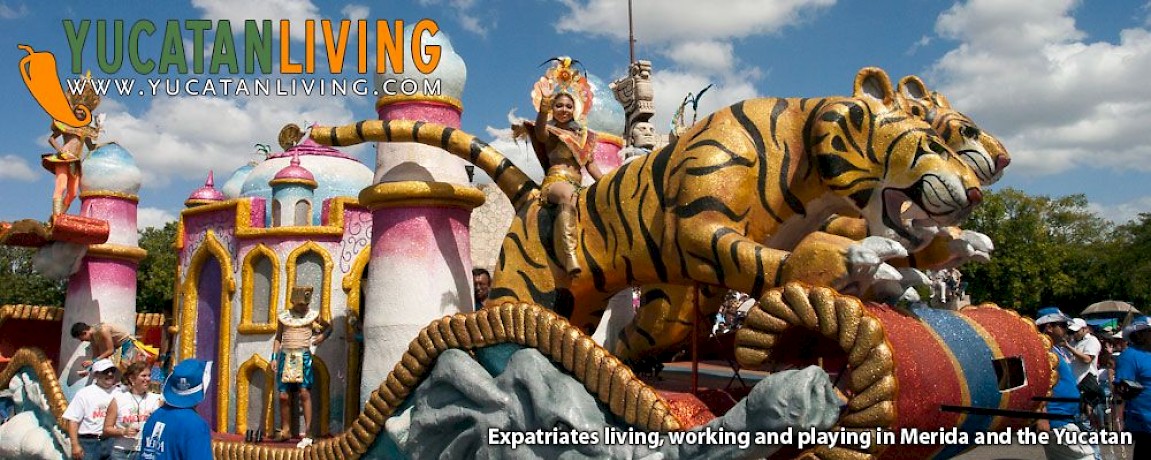


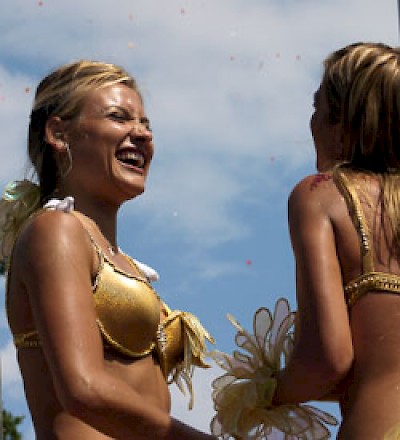
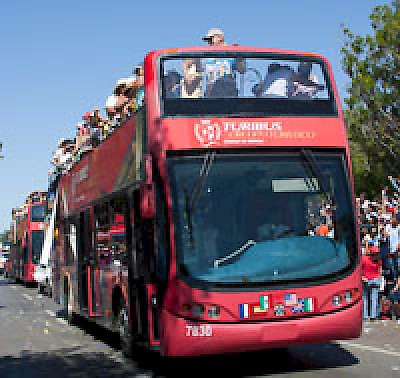
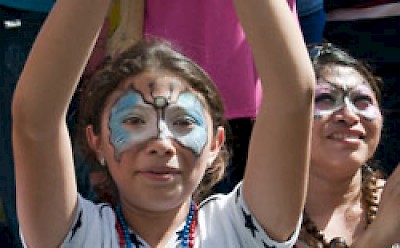
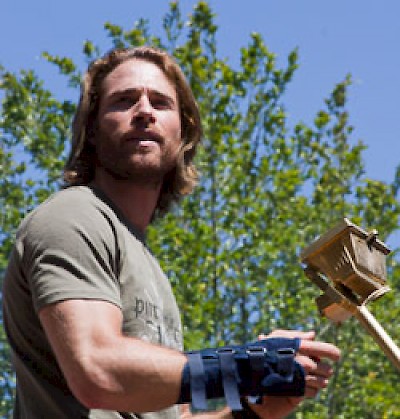
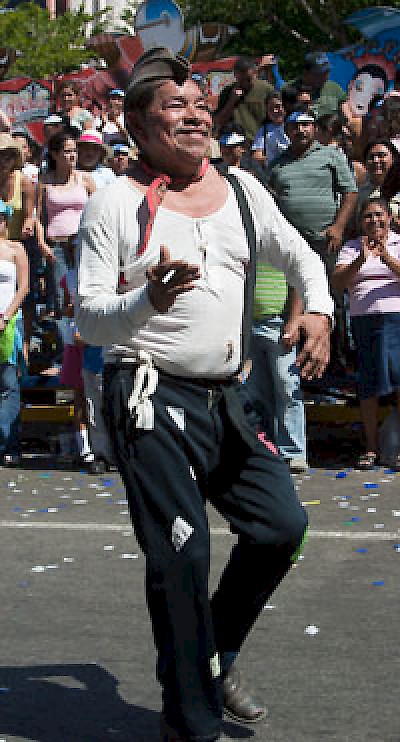
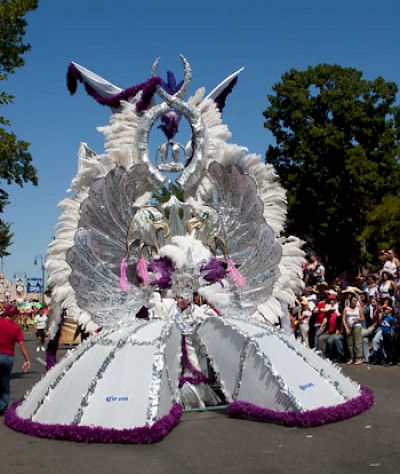
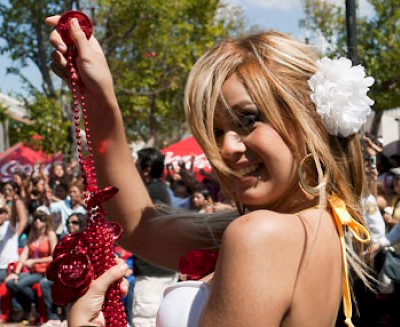
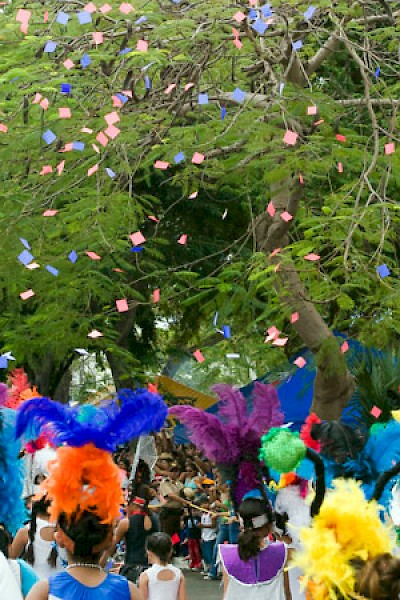

Comments
Working Gringos 13 years ago
Thanks, Nancy. We fixed it. Actually, all the reserved seats are sold out now. But you can get seats by buying them from a uniformed young person with an ID near the seat you want. You probably need to buy them three to four hours ahead of time, and actually stay in the seat. Just having the ticket doesn't mean the seat will be empty when you show up a few minutes before the parade. We know... it shouldn't be that way, but it is. So be forewarned.
Reply
nancy 13 years ago
the link to the site for seats isn't working
Reply
« Back (10 to 12 comments)